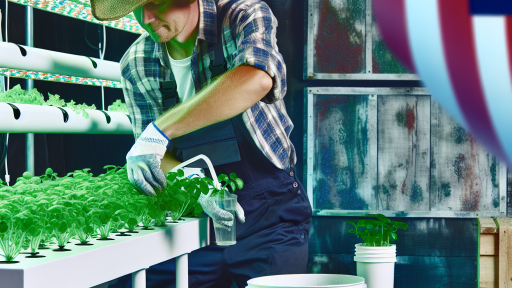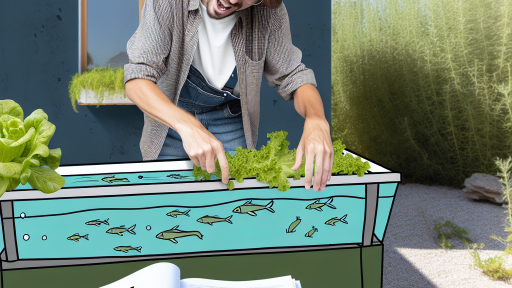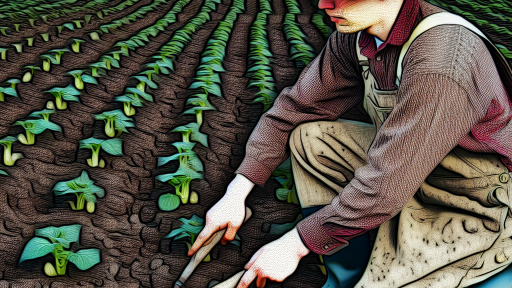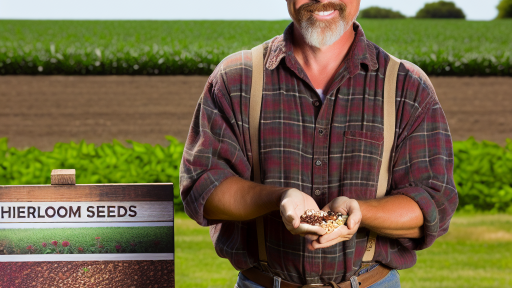Understanding the Unique Needs of Container-Grown Plants
Space Considerations
Container-grown plants require adequate space for healthy growth.
The limited area affects root development and nutrient absorption.
Hence, choose appropriate pot sizes based on plant type.
Use containers with drainage holes to prevent water logging.
Soil Quality
Soil quality is crucial for container-grown plants.
Utilize a well-draining potting mix to support growth.
This mix should retain moisture while allowing air circulation.
Add organic matter to enrich the soil and enhance fertility.
Watering Needs
Watering practices differ for container-grown plants.
Containers typically dry out faster than garden beds.
Monitor moisture levels regularly to prevent dehydration.
Implement a consistent watering schedule based on plant needs.
Nutrient Management
Container plants rely on limited nutrients from the soil.
Regularly fertilize using a balanced fertilizer to promote growth.
Organic options, such as compost, can also enrich the soil.
Transform Your Agribusiness
Unlock your farm's potential with expert advice tailored to your needs. Get actionable steps that drive real results.
Get StartedFollow recommended application rates to avoid nutrient burn.
Light Exposure
Light exposure is essential for the health of container-grown plants.
Assess the sunlight requirements for each plant variety.
Adjust the positioning of containers to maximize sunlight exposure.
Consider using grow lights for indoor container gardens.
Temperature and Climate
Temperature directly affects container-grown plants’ growth rates.
Some plants thrive in warmer conditions, while others prefer cooler temperatures.
Consider the specific needs of each plant, especially during seasonal changes.
Protect containers during extreme weather conditions to prevent stress.
Timing Your Harvest: Key Indicators of Readiness
Visual Cues to Look For
Color changes indicate ripeness in many plants.
For fruits, look for a vibrant color without blemishes.
Leaf health also matters; yellowing may signal it’s time to harvest.
For vegetables, specific shades often hint at flavor maturity.
Texture and Size Considerations
Feel the texture; smooth often means ready to pick.
Fruits typically soften as they ripen, enhancing sweetness.
Measure your plants; size consistency indicates harvest time.
Check the recommended sizes for your specific plant types.
Aroma Signals
Strong fragrances can indicate a flavorful harvest.
For herbs, the aroma intensifies when fully mature.
Some plants emit unique scents signifying peak readiness.
Testing for Flavor
Sampling your produce is an effective method for determining readiness.
For sweet fruits, taste tests confirm they are ripe.
Vegetables like peppers show flavor elevation at certain stages.
Time of Year and Weather Conditions
Pay attention to seasonal changes; they impact growth rates.
Showcase Your Farming Business
Publish your professional farming services profile on our blog for a one-time fee of $200 and reach a dedicated audience of farmers and agribusiness owners.
Publish Your ProfileCooler nights may signal an end to the growing season.
Harvesting just before expected rain can prevent spoilage.
Monitor for pests too; their presence might mean harvest urgency.
Essential Tools and Equipment for Harvesting
Basic Harvesting Tools
Begin with sharp pruning shears for cutting stems and branches.
These shears minimize damage to the plants during harvesting.
Choose a quality pair to ensure smooth and efficient cuts.
Use a harvesting knife for larger fruits and vegetables.
This tool provides greater control and precision.
Don’t forget sturdy gloves to protect your hands from injuries.
Gloves also help in maintaining cleanliness while working.
Containers for Collecting Harvest
Select baskets or bins to collect your harvested plants.
Choose breathable containers to prevent damage to delicate produce.
Consider using colanders for leafy greens or herbs.
Colanders allow for easy rinsing after collection.
Transportation Equipment
Use carts for transporting larger quantities of harvested plants.
Carts reduce the strain on your body during the process.
Ensure carts are sturdy and easy to maneuver.
Consider using a dolly for transporting heavier loads.
Safety Gear and Accessories
Wear a hat to protect yourself from the sun during long hours.
Consider wearing knee pads for extra comfort if kneeling is required.
If using machinery, ensure proper eye protection is worn.
Some tasks may require hearing protection for safety.
Maintenance Tools
Keep a cleaning brush handy for removing dirt from tools.
Regularly oil and maintain your tools for longevity.
Store tools in a dry place to prevent rust.
Record-Keeping Supplies
Have a notebook or digital device to track your harvests.
Recording yields helps you plan for future seasons.
It also aids in analyzing which techniques work best.
You Might Also Like: Scaling Your Hydroponic Farm Successfully
Techniques for Gentle Harvesting to Minimize Damage
Careful Assessment
Begin by assessing the plant’s maturity before harvesting.
Look for signs of ripeness in fruits and vegetables.
Additionally, check the firmness and color of the produce.
Make sure to choose the right time of day for harvesting.
Early morning or late afternoon often works best.
Using the Right Tools
Utilize sharp, clean tools for all harvesting tasks.
Secateurs or pruning shears are ideal for most plants.
For larger harvests, consider using scissors or specialized harvest knives.
Always maintain your tools to prevent damage to the plant.
Regular cleaning reduces the risk of disease transfer.
Gentle Handling Techniques
Handle plants with care to avoid bruising or tearing.
Showcase Your Farming Business
Publish your professional farming services profile on our blog for a one-time fee of $200 and reach a dedicated audience of farmers and agribusiness owners.
Publish Your ProfileSupport the base of fruits and vegetables while picking them.
Avoid pulling or yanking, as this can harm the plant.
Instead, use a twisting motion to detach the produce.
When using baskets, ensure they are padded to protect the harvest.
Harvesting Strategies
Employ strategies to maximize both yield and quality.
Start by removing the outer fruits first when applicable.
This technique promotes healthy growth in remaining produce.
Pay attention to the plant’s specific needs and growth stage.
Consider staggered harvesting to space out your yield over time.
Post-Harvest Handling
After harvesting, handle produce gently to prevent damage.
Immediately place fruits and vegetables in a shaded area.
Avoid exposing them to direct sunlight to reduce wilting.
Clean and prepare the harvested items for storage efficiently.
Store them in appropriate conditions to ensure freshness.
Uncover the Details: Integrating Fruit Trees in Small Farms
Post-Harvest Handling: Best Practices for Container Plants
Importance of Post-Harvest Handling
Post-harvest handling directly impacts plant quality.
Proper techniques reduce loss and maintain freshness.
Moreover, they enhance the marketability of plants.
Gather Necessary Tools
Start by preparing the right tools for harvesting.
Gather sharp pruning shears or scissors.
Use clean containers to hold the harvested plants.
Additionally, have gloves available for protection.
Timing the Harvest
Harvest at the right time for optimal quality.
Check for signs of maturity in each plant type.
Some plants thrive when harvested early.
Others may require full maturity for flavor.
Harvesting Techniques
Handle plants gently during the harvesting process.
This practice prevents bruising and other damage.
Use a twisting motion for herbaceous plants.
For woody plants, cut stems at an angle.
Post-Harvest Care
After harvesting, remove any damaged leaves immediately.
This step prevents the spread of disease.
Clean the harvested plants lightly with water.
Next, dry them gently to avoid rot.
Storage Solutions
Store plants in a cool, shaded area.
Avoid direct sunlight during storage.
Consider using breathable bags or containers.
Proper ventilation helps maintain plant freshness.
Transportation Best Practices
When transporting, handle plants with care.
Minimize movement to prevent injury.
Showcase Your Farming Business
Publish your professional farming services profile on our blog for a one-time fee of $200 and reach a dedicated audience of farmers and agribusiness owners.
Publish Your ProfileSecurely pack plants to avoid crushing.
Use padded materials for extra protection.
Monitoring Conditions
Keep an eye on temperature and humidity levels.
These factors greatly affect plant longevity.
Adjust storage conditions as necessary.
Regular monitoring helps prevent spoilage.
Delve into the Subject: Seed Storage Tips Every Farmer Should Know
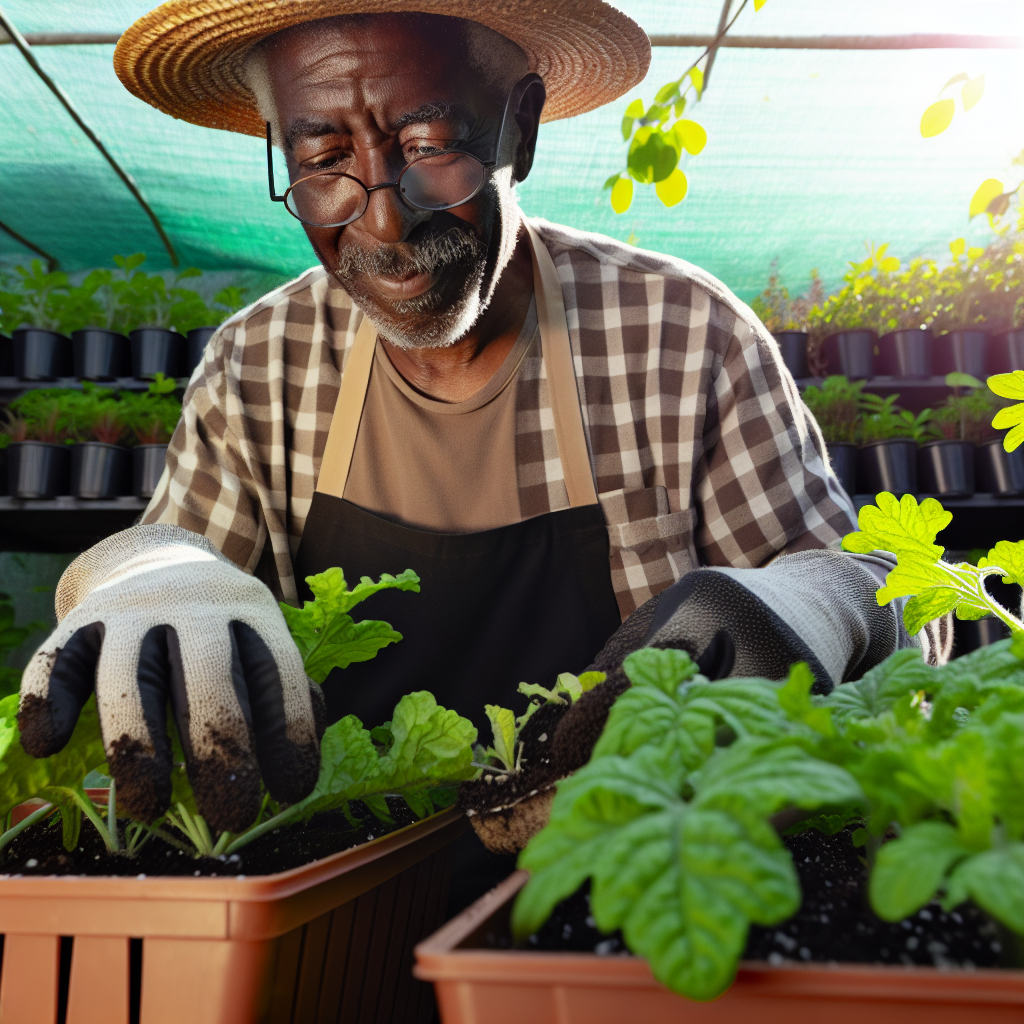
Common Mistakes to Avoid When Harvesting
Ignoring Timing
Harvesting at the wrong time can ruin your plants.
Plants have specific growth cycles, and timing is crucial.
Check for signs of ripeness before harvesting.
For instance, fruits should be fully colored and firm.
Similarly, leafy greens should be tender and vibrant.
Using Dull Tools
Dull tools can damage plants when harvesting.
Sharp shears or knives help make clean cuts.
Always sharpen your tools before starting work.
This ensures a smooth cut and less plant stress.
Neglecting Cleanliness
Cleanliness is vital when harvesting plants.
Dirty tools can transfer diseases to your plants.
Always disinfect your tools before and after use.
Furthermore, wash your hands to prevent contamination.
Forgetting to Support Plants
Some plants need support during harvesting.
For example, tomato and pepper plants can break easily.
Utilize stakes or trellises to provide stability.
This minimizes damage to the plant and fruit.
Improper Storage
After harvesting, proper storage is critical.
Many gardeners overlook the importance of this step.
Store harvested plants in a cool, dry place.
This preserves freshness and quality for a longer time.
Additionally, avoid crowded storage conditions.
Choosing the Wrong Time of Day
The time of day can affect harvesting quality.
It’s best to harvest in the morning when temperatures are cooler.
This practice helps maintain moisture levels in plants.
In contrast, afternoon heat can wilt fragile leaves.
Explore Further: DIY Seed Cleaning Methods For Farmers
Tips for Maximizing Yield from Container-Grown Plants
Choosing the Right Container
Selecting the correct container promotes healthy plant growth.
Consider using pots with drainage holes for proper water flow.
Opt for materials like clay or plastic, which insulate roots effectively.
Additionally, ensure the container is large enough for root expansion.
Soil Quality Matters
Utilize high-quality potting soil designed for container plants.
This type of soil offers the necessary nutrients for optimal growth.
Showcase Your Farming Business
Publish your professional farming services profile on our blog for a one-time fee of $200 and reach a dedicated audience of farmers and agribusiness owners.
Publish Your ProfileConsider mixing in organic matter to enhance soil health.
Regularly check the pH level to maintain the ideal range for your plants.
Watering Wisely
Regular watering is essential for container-grown plants.
However, avoid overwatering to prevent root rot.
Always check the top inch of soil for moisture before watering.
Consider using self-watering pots to ensure consistent hydration.
Nutrient Management
Feeding your plants is key to maximizing yield.
Use a balanced fertilizer to provide essential nutrients.
Follow the application instructions to avoid nutrient burn.
Consider using liquid fertilizers for quicker absorption by plants.
Optimal Light Conditions
Ensure container plants receive adequate sunlight for growth.
Most plants require at least six hours of direct sunlight daily.
Position containers in areas that receive full sun exposure.
For shaded areas, choose shade-tolerant plant varieties.
Pest and Disease Control
Regularly inspect your plants for signs of pests or diseases.
Use organic pesticides to manage pest populations effectively.
Keep the garden clean to deter potential infestations.
Consider companion planting to naturally repel pests.
Harvesting Techniques
Harvesting at the right time enhances taste and yield.
Monitor plants closely as they approach maturity.
Use clean, sharp tools to prevent damage during harvesting.
Handle harvested produce gently to maintain quality.
Seasonal Considerations for Continuous Harvesting
Understanding Seasonal Changes
Seasonal changes affect the growth of container-grown plants significantly.
Heat and cold impact both the health and yield of your plants.
Wind and humidity also play vital roles in plant development.
Optimal Harvesting Times
Understanding the growth cycle is crucial for timing your harvests.
Harvesting too early might result in lower yields.
On the other hand, waiting too long can diminish quality.
Adjusting Techniques by Season
In spring, use gentle pruning to encourage growth.
Summer requires careful watering to avoid drought stress.
Fall brings a need for protection against early frosts.
Winter demands adaptations to indoor lighting and heating.
Monitoring Plant Health
Regularly check for signs of pests and diseases.
Healthy plants yield better harvests throughout the season.
Consider organic treatments to manage infestations naturally.
Diverse Cropping Strategies
Growing a variety of plants ensures continuous yield.
Intercropping can maximize space and resources.
Rotation helps maintain soil health and mitigate pests.
Planning for Future Seasons
Evaluate past harvests to improve future outcomes.
Document successes and failures to adjust techniques.
Showcase Your Farming Business
Publish your professional farming services profile on our blog for a one-time fee of $200 and reach a dedicated audience of farmers and agribusiness owners.
Publish Your ProfileStay informed about seasonal trends and changing climates.

